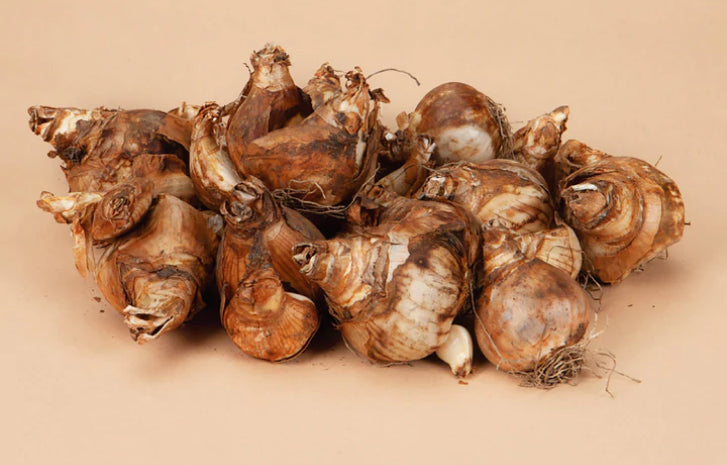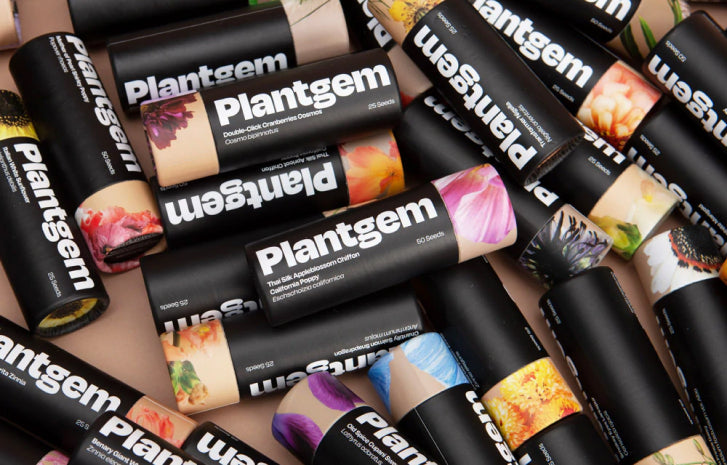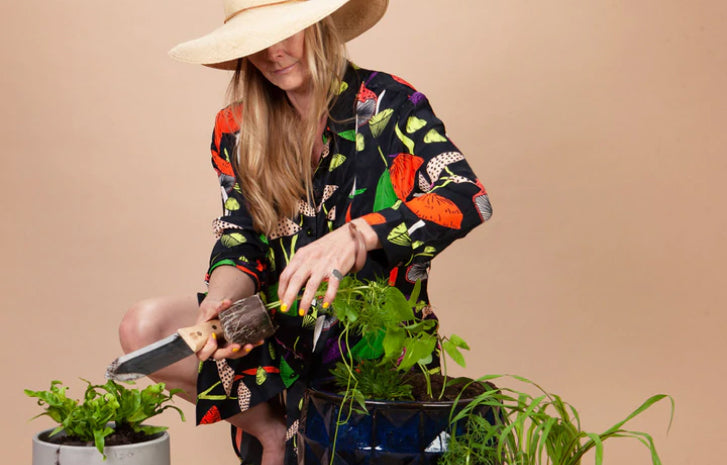Bearded Iris

Description
Iris are plants for the artist's garden, with striking blooms on tall stately stalks that intrigue from every angle and come in every color way imaginable. They are perfect for cutting, and spread gracefully to cover ever more garden space each year.
| Height
|
24-36"
|
| Spacing
|
12-24" between plants
|
| Light
|
Full sun or part shade
|
| Zone
|
Perennial zones 3-8
|
| Shipping
|
Beginning in fall
|
| Includes
|
3 large bare root plants and a wooden plant marker
|
| Botanical Name
|
Iris Germanica
|
Conditions
| Deer
|
Deer resistant
|
| Kids+Pets
|
Toxic
|
| Water
|
Drought tolerant
|
| Indoors+Pots
|
Grows well in containers outside
|
Receiving and Planting
Your Iris want to be planted within a day or two of when you receive them. If you can't plant them right away, store them someplace dark and cool, like the basement. It’s important to know the difference between rhizomes and roots when planting Irises. The rhizome is the potato-like thing and the roots are the strings hanging off of it. Soak your Iris rhizome in room temperature water overnight to re-hydrate it before planting. Dig a hole about 12” wide and 6” inches deep. (Plant roots around 2 ft apart; they need air circulation and room to grow. Personal space: it’s important for everybody). Then, fill the hole back in so that your root sits at the correct depth, *just* below the surface, packing the dirt back into the hole a little bit so the rhizome won’t sink when watered. You want to plant the rhizome horizontally, (on its side, slightly pointing down), so the roots can grow down into the soil from under it, with the stems of the plant (green or brown trimmed leaves) pointing straight up. About 5% of the top of the rhizome should be a little exposed. The trimmed stems should be completely exposed. Fill in the dirt around your Iris, making sure all the roots are tucked in and covered. Press firmly all around the base. Water thoroughly. Try to contain your excitement until next spring when your fancy Irises will be the talk of the neighborhood.
Sun, Soil, Water
Irises aren’t too picky when it comes to soil types, but they need good drainage, so pick a spot on a little hill or where there is never, ever sitting water. They also need tons of sun - at least 6 hours a day or more. Water them after planting and then only if it’s very dry. Their rhizomes hold the water and food they need.
Flowers and Foliage
The leaves of Irises grow like a fan, so you’ll also want to consider the “front” of the Iris when planting it. Plant the rhizome pointing towards where you will most likely view it, so you can admire the fan’s array straight on. Generally, Irises bloom for a couple glorious weeks in the summertime. Enjoy with gusto. Stare at them often.
Problem Solving
The most important thing when it comes to Irises: don’t let their toes sit in water. They need water to drain away from their roots. Do not mulch around their base, as this keeps the soil moist. Cut back brown and withered foliage (all the way - about 1 inch off the rhizome) to keep fungus away over the winter. (It just looks better, too, and we’re trying to look good here, amirite?) Cut off seed pods after flowering to save the plant’s energy and prevent seedlings from crowding the scene.
Description
Iris are plants for the artist's garden, with striking blooms on tall stately stalks that intrigue from every angle and come in every color way imaginable. They are perfect for cutting, and spread gracefully to cover ever more garden space each year.
| Height
|
24-36"
|
| Spacing
|
12-24" between plants
|
| Light
|
Full sun or part shade
|
| Zone
|
Perennial zones 3-8
|
| Shipping
|
Beginning in fall
|
| Includes
|
3 large bare root plants and a wooden plant marker
|
| Botanical Name
|
Iris Germanica
|
Conditions
| Deer
|
Deer resistant
|
| Kids+Pets
|
Toxic
|
| Water
|
Drought tolerant
|
| Indoors+Pots
|
Grows well in containers outside
|



